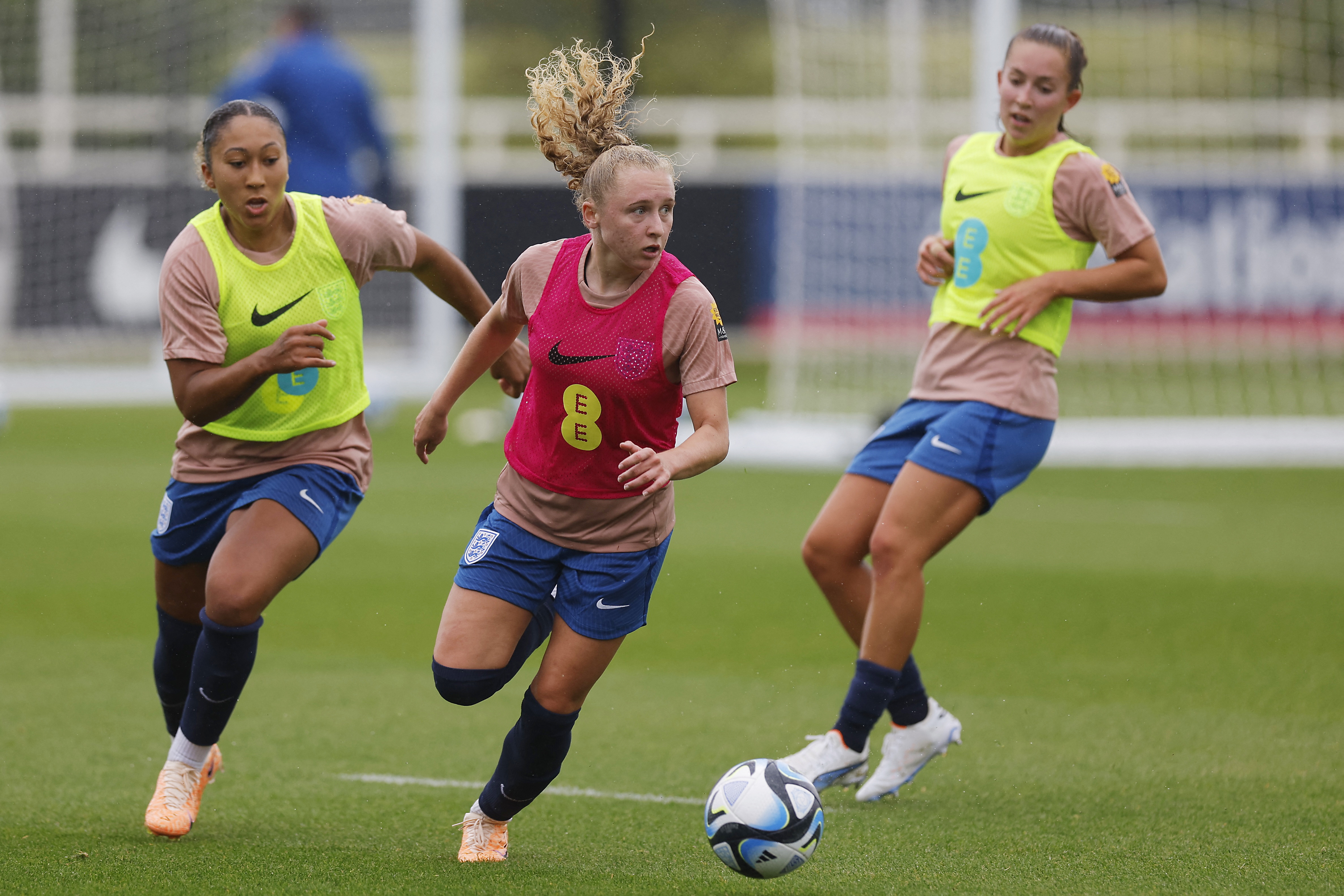Battle of the bulge: does heavy lifting harm the pelvic floor?

Females have unique anatomy, biomechanics, and physiology that requires careful consideration, especially within sport. While exercise is beneficial, the effects on the pelvic floor can cause adverse outcomes. Pelvic floor dysfunction (PFD) includes urinary incontinence, anal incontinence, and pelvic organ prolapse (POP). Up to 25% of females suffer PFD, with urinary incontinence being the most common(1). Though many clinicians consider PFD a postpartum problem, statistics show a high prevalence among high-school and college athletes of non-childbearing status(2).
Female athletes are almost three times more likely to suffer PFD compared to sedentary females(3). Typical strength and conditioning programs neglect pelvic floor training, and athletes accept that PFD is a consequence of running, jumping, or high-impact sport. Athletic incontinence describes urinary incontinence only while exercising, and up to 80% of female athletes across a wide range of sports experience it(4). A systemic review conducted by researchers in Brazil found that more instances of urinary incontinence occurred during resistance training than any other sport(5). This syndrome can become a barrier to exercise and result in diminished athletic performance, quality of life, or abandonment of sport.
Benefits of weightlifting for females
A woman’s anatomy and biomechanics can place her at greater risk of musculoskeletal injury. Females also have reduced muscle mass and smaller muscle fibers than males, resulting in an overall reduction in potential strength(6).Resistance training maximizes strength, reduces injury risk, and improves athletic performance.Females reach their peak bone mass by puberty. Yet, women can influence their bone mineral density (BMD) until they become 30-years-old. Menstrual and hormonal dysfunctions affect this due to low estrogen, and there is a rapid decline in BMD following menopause(7). Female athletes require five to 15% greater BMD than non-athletes to tolerate the repetitive loading and microtrauma from training(8). Bone reacts proportionally to the forces applied to it and requires 85% to 90% loading of the one-repetition maximum to stimulate bone adaptation(9). Heavy weightlifting in this region changes bone geometry, increases cross-sectional strength and reduces the risk of fractures(7). Therefore, weightlifting by female athletes is essential for musculoskeletal health and bone loss prevention.
Effects of resistance training on the pelvic floor
Heavy weightlifting increases intra-abdominal pressure (IAP), the pressure within the abdominal cavity, of which the pelvic floor is the base. The Valsalva maneuver, often the preferred breathing technique in heavy weightlifting, further intensifies this pressure. Increased IAP is thought to overload and weaken the pelvic floor. If the pelvic floor muscles (PFM) cannot counteract this pressure quickly or strongly enough, the sphincter closure system may fail, and the athlete might experience UI(10,11). Muscle fatigue may also present as PFM weakness. Thus, strenuous heavy exercise or prolonged exercise duration both cause pelvic floor weakness(12).What the evidence says
Surprisingly, researchers from Norway and Australia contradicted the connection between IAP and POP by reporting that heavy weight lifting does not increase the prevalence of POP(10,13). The research demonstrated that those who lifted lighter weights (<15kg and 16-50kg) were more likely to report POP or UI symptoms compared to those lifting over 50kg(13). The researchers suggest these findings occur because of the lower cumulative daily and weekly exposure to lifting near the athlete’s one-repetition maximum. In comparison, those lifting lighter weights may do so more frequently and for longer durations.Additional findings support this hypothesis. Female athletes who completed 90-minute long strength sessions experienced a 17% reduction in their maximum voluntary PFM contraction. Meanwhile, those ending one bout of strenuous weightlifting had no change in their PFM strength(14.15).
These findings positively support weightlifting without risk to the PFMs and suggest it is the duration of exposure to resistance training that initiates PFD symptoms rather than the actual weight lifted. It also appears that there is an individual threshold of IAP related to the athlete’s risk:benefit ratio(10). If taught to lift correctly, female athletes can tolerate large increases in IAP without experiencing UI or POP(10).
Strength training program
Typical PFM activation during daily activities is not sufficient to increase PFM function. Female athletes require much stronger PFMs with faster reactions to counteract the IAP and ground reaction forces they encounter(10). An optimal PFM strengthening program progresses in stages (see table 1)(16). This additional work should complement the regular training program. Ensure that the athlete is not already fatigued at the start of this routine.Use breathing techniques in combination with PFM exercises to coordinate the thoracic and pelvic diaphragms(16). It is important to separate breathing from muscle contraction to ensure maximum efficiency of the muscles since PFM activity increases during exhalation(17). Correct breathing also reduces pelvic pressure while engaging the PFM, a skill especially important when lifting heavy loads(16).
| Stage | Aim | Exercise | Prescription | Notes |
|---|---|---|---|---|
| One | Achieve correct PFM contraction. | PFM contractions. | 3-4x week. | |
| Build endurance. | 3x5 for 3-5 seconds each. | |||
| Low intensity, high duration (30% contraction) | ||||
| Build speed. | 3x5 for 1-3 seconds each. | |||
| High intensity, short duration (near maximal contraction) | ||||
| Combine with lateral costal breathing. | As you inhale, feel the ribcage expanding. As you exhale, feel ribcage returning. | |||
| Two | Achieve PFM contraction in various positions | PFM contractions in different positions (supine, sitting, kneeling, standing) | 3-4x week. | |
| Add deep exhalation to PFM contraction | On the exhalation phase of lateral costal breathing, tighten and lift the muscles around the vagina. Place your hands on your lower abdomen and feel the tension while contracting your PFM. | |||
| Three | Progress strength. | PFM contractions in various positions adding weights to the lower limbs | 3-4x week. | |
| Achieve PFM and abdominal co-contraction | 3x10 reps for 1-3 second holds. | |||
| Add core abdominal muscle co-contraction | On the exhalation phase of lateral costal breathing, draw in your lower abdominals and lift the PFM. Then relax and let go while still lateral costal breathing. | |||
| Four | Maximize strength in dynamic movements | PFM contractions during dynamic strength exercises e.g. Bodyweight squats, step-ups. | 2-3x week. | |
| 3x10 for 3-5second holds. | ||||
| Add hypopressive exercise | 3x3 with 10-second breath-hold, and 3-5second PFM hold. | Perform 3 lateral costal breathes with slow deep exhalations. After the third exhalation, hold your breath and expand your rib cage laterally. When the rib cage is completely expanded, tighten the PFM around your vagina. Then let go and relax the PFM during lateral costal breathing. | ||
| Five | Translate to functional and high-impact movements | PFM contractions during isolated high-impact exercises, e.g. Hops, jumps. | 2-3x week. | |
| Six | Achieve within sport | PFM contractions during sports activities. | 2-3 x week |
Summary
Strength training is essential for athletic performance and the overall health of female athletes. Implementation of a specific PFM strength plan can facilitate continued participation in weightlifting at elite levels without causing or worsening PFD or POP. Fear of POP is not a reason to avoid prescribing heavy resistance training for female athletes.References
- Curr Opin Obstet Gynecol. 2015; 27: 380–384, 2015.
- Urol Nurs. 2007; 27: 21–39.
- Int Urogynecol J. 2018; 29(12): 1717-1725.
- Rev Bras Ginecol Obstet. 2017; 39: 441–442.
- Br J Sports Med. 2018; 52: 1586–1590.
- Int. Olympic Committee. 2015; John Wiley & Sons Inc. Chapter 1, p2.
- Int. Olympic Committee. 2015; John Wiley & Sons Inc. Chapter 6, p58.
- Med Sci Sports Exerc. 2007; 39(1): 1867-1882.
- J Bone Miner Res. 2018; 33(2): 211–20.
- Sports Medicine. 2020; 50: 471–484.
- Clin Biomech. 2017; 41: 20–27.
- Acta Obstet Gynecol Scand. 2007; 86: 870–876.
- Int Urogynecol J. 2020; 31:1551–1558.
- Acta Obstet Gynecol Scand. 2007; 86(7): 870–6.
- Am J Obstet Gynecol. 2016; 215(3): 316.e1–7.
- NSCA. 2020; 42(4): 82-92.
- Br J Sports Med. 2008; 42(11): 630-631.
You need to be logged in to continue reading.
Please register for limited access or take a 30-day risk-free trial of Sports Injury Bulletin to experience the full benefits of a subscription. TAKE A RISK-FREE TRIAL
TAKE A RISK-FREE TRIAL
Newsletter Sign Up
Subscriber Testimonials
Dr. Alexandra Fandetti-Robin, Back & Body Chiropractic
Elspeth Cowell MSCh DpodM SRCh HCPC reg
William Hunter, Nuffield Health
Newsletter Sign Up
Coaches Testimonials
Dr. Alexandra Fandetti-Robin, Back & Body Chiropractic
Elspeth Cowell MSCh DpodM SRCh HCPC reg
William Hunter, Nuffield Health
Be at the leading edge of sports injury management
Our international team of qualified experts (see above) spend hours poring over scores of technical journals and medical papers that even the most interested professionals don't have time to read.
For 17 years, we've helped hard-working physiotherapists and sports professionals like you, overwhelmed by the vast amount of new research, bring science to their treatment. Sports Injury Bulletin is the ideal resource for practitioners too busy to cull through all the monthly journals to find meaningful and applicable studies.
*includes 3 coaching manuals
Get Inspired
All the latest techniques and approaches
Sports Injury Bulletin brings together a worldwide panel of experts – including physiotherapists, doctors, researchers and sports scientists. Together we deliver everything you need to help your clients avoid – or recover as quickly as possible from – injuries.
We strip away the scientific jargon and deliver you easy-to-follow training exercises, nutrition tips, psychological strategies and recovery programmes and exercises in plain English.










